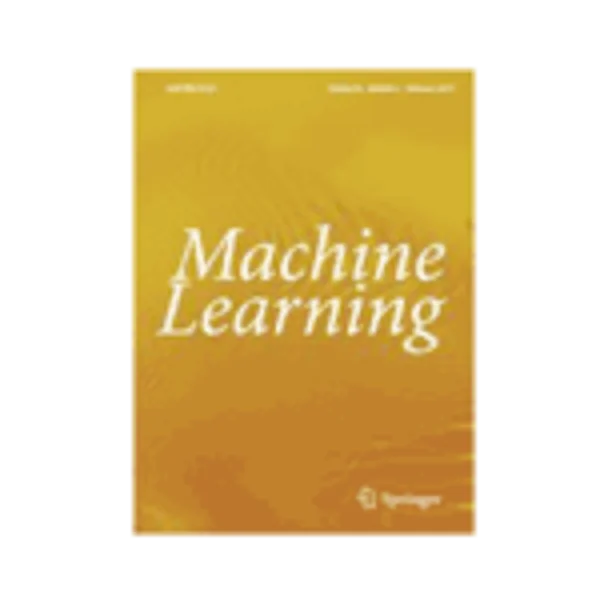-
on using nearly-independent feature families for high precision and confidence
جزئیات بیشتر مقاله- تاریخ ارائه: 1392/07/24
- تاریخ انتشار در تی پی بین: 1392/07/24
- تعداد بازدید: 1086
- تعداد پرسش و پاسخ ها: 0
- شماره تماس دبیرخانه رویداد: -
consider learning tasks where the precision requirement is very high, for example a 99 % precision requirement for a video classification application. we report that when very different sources of evidence such as text, audio, and video features are available, combining the outputs of base classifiers trained on each feature type separately, aka late fusion, can substantially increase the recall of the combination at high precisions, compared to the performance of a single classifier trained on all the feature types, i.e., early fusion, or compared to the individual base classifiers. we show how the probability of a joint false-positive mistake can be less—in some cases significantly less—than the product of individual probabilities of conditional false-positive mistakes (a noisyor combination). our analysis highlights a simple key criterion for this boosted precision phenomenon and justifies referring to such feature families as (nearly) independent. we assess the relevant factors for achieving high precision empirically, and explore combination techniques informed by the analysis.
مقالات جدیدترین رویدادها
-
استفاده از تحلیل اهمیت-عملکرد در ارائه الگوی مدیریت خلاقیت سازمانی و ارائه راهکار جهت بهبود
-
بررسی تاثیر ارزش وجوه نقد مازاد بر ساختار سرمایه شرکت های پذیرفته شده در بورس اوراق بهادار تهران
-
بررسی تأثیر سطح افشای ریسک بر قرارداد بدهی شرکت های پذیرفته شده در بورس اوراق بهادار تهران
-
بررسی تأثیر رتبه بندی اعتباری مبتنی بر مدل امتیاز بازار نوظهور بر نقد شوندگی سهام با تأکید بر خصوصی سازی شرکت ها
-
تأثیر آمیخته بازاریابی پوشاک ایرانی بر تصویر ذهنی مشتری پوشاک ایرانی (هاکوپیان)
-
ارزیابی نقش دلبستگی به مکان درطراحی سیتی هال اهواز
-
معرفی روش نوین آنالیز سریع آسیب پذیری لرزه ای ساختمانها و کاربرد آن در مدیریت بحران با بهره گیری از تکنیک gis
-
نقش فن آوری اطلاعات و ارتباطات در فرایند یاددهی – یادگیری درمحیط های آموزشی
-
using neural & fuzzy-neural approaches in school trip distribution modeling
-
solution of two-dimensional shallow water equations by tvd-maccormack scheme
مقالات جدیدترین ژورنال ها
-
مدیریت و بررسی افسردگی دانش آموزان دختر مقطع متوسطه دوم در دروان کرونا در شهرستان دزفول
-
مدیریت و بررسی خرد سیاسی در اندیشه ی فردوسی در ادب ایران
-
واکاوی و مدیریت توصیفی قلمدان(جاکلیدی)ضریح در موزه آستان قدس رضوی
-
بررسی تاثیر خلاقیت، دانش و انگیزه کارکنان بر پیشنهادات نوآورانه کارکنان ( مورد مطالعه: هتل های 3 و 4 ستاره استان کرمان)
-
بررسی تاثیر کیفیت سیستم های اطلاعاتی بر تصمیم گیری موفق در شرکتهای تولیدی استان اصفهان (مورد مطالعه: مدیران شرکتهای تولیدی استان اصفهان)
-
بررسی نقش مدیریت منابع انسانی پویا در ارتقاء بهره وری و عملکرد کارکنان شرکت آپاداناسرام
-
عقد ضمان در نظام بانکی
-
بررسی اصول و مبانی اثر معنویات دینی در زندگی اجتماعی دانش آموزان
-
دکترین رس ایپسا لوکویتور و کاربرد آن در مسئولیت مدنی res ipsa loquitur
-
the relationship between working capital management and criterions for value-based performance of the companies listed in tehran stock exchange




سوال خود را در مورد این مقاله مطرح نمایید :